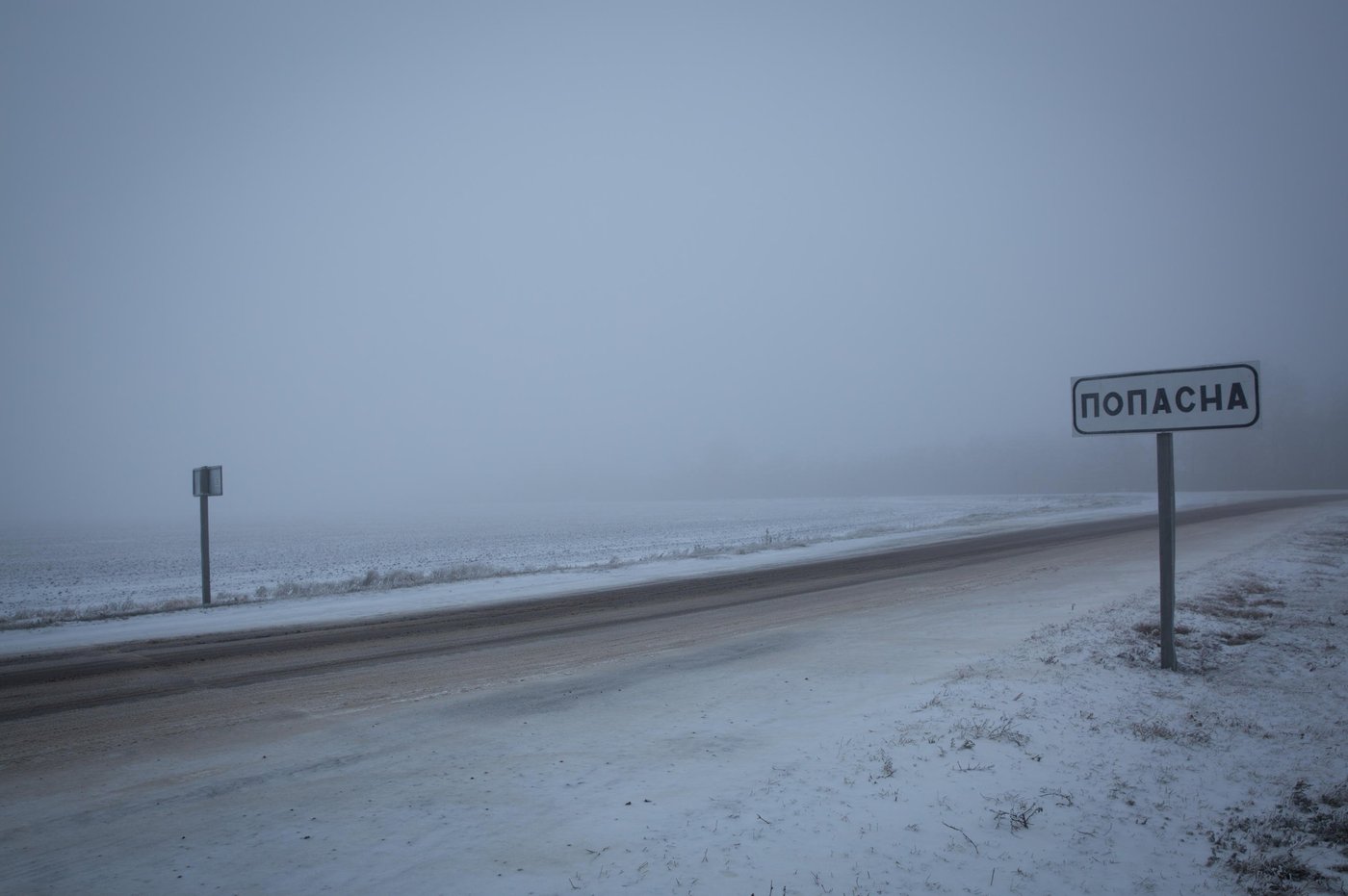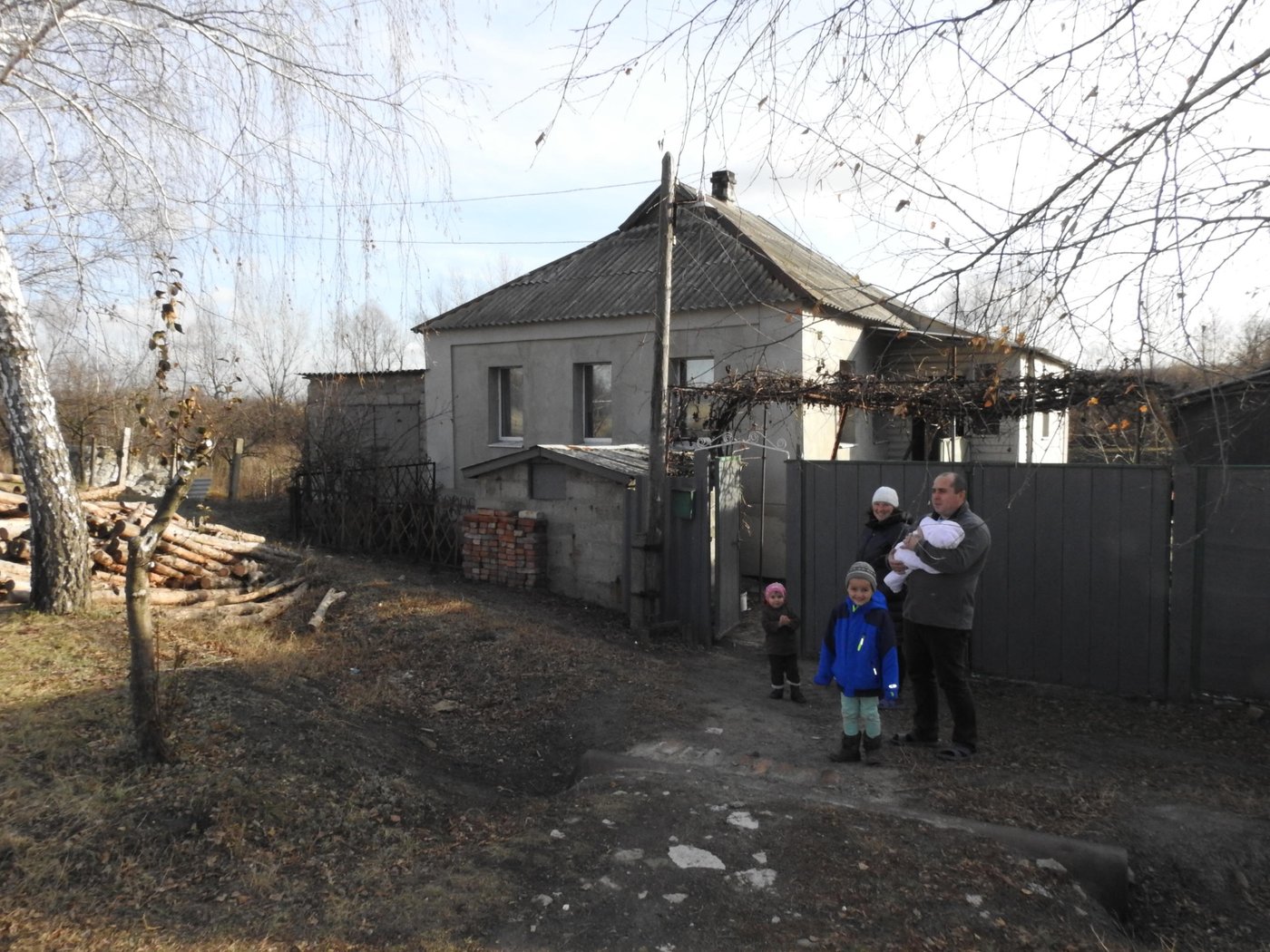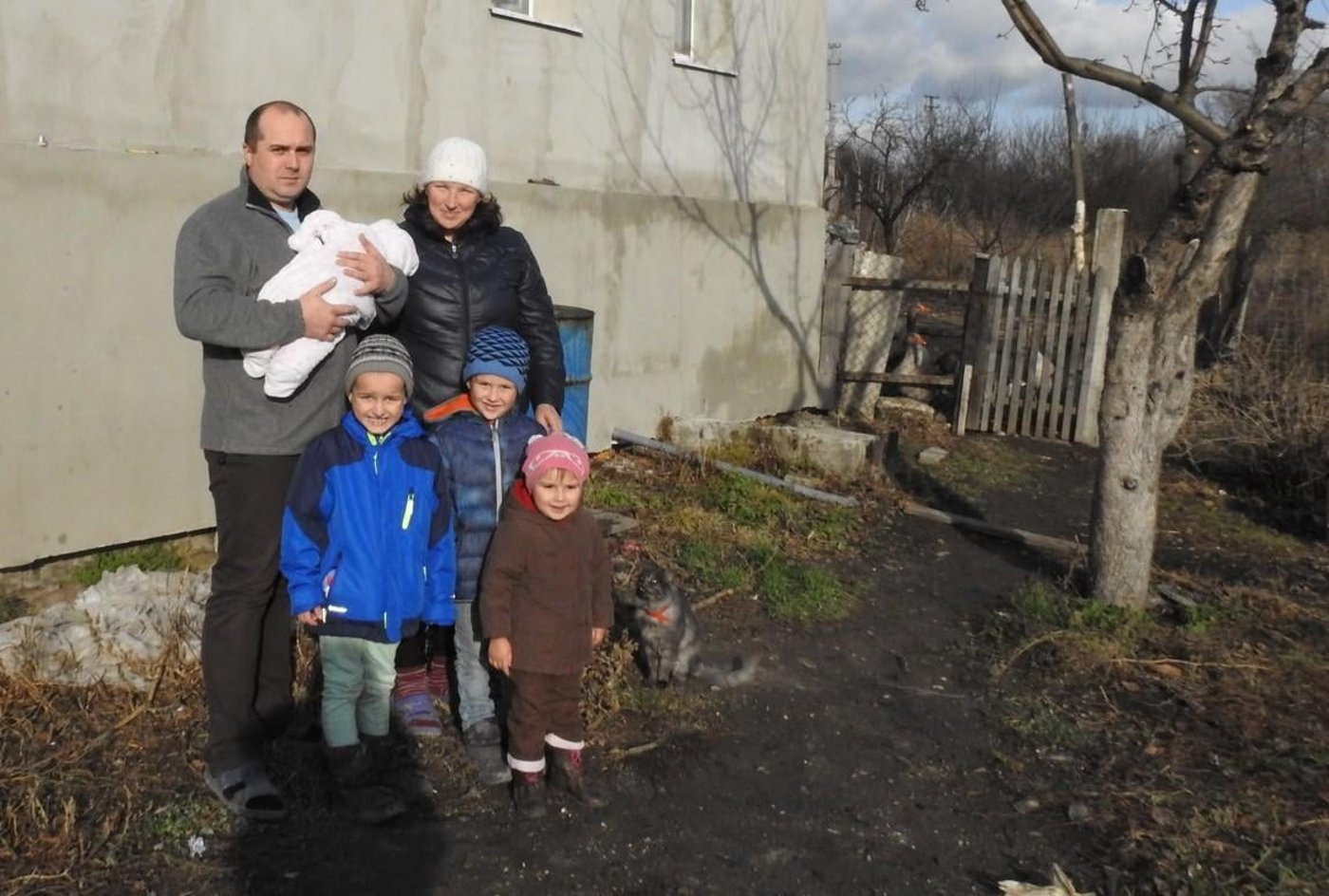Olha and her family live in the small village of Nyzhnie in Ukraine’s Luhansk region, near the so-called “contact line” that separates government-controlled areas from non-government-controlled areas. The family struggles to cope with the cost of fuel.
“It is about UAH 6,000 [equivalent to USD 250], which is too costly for a large family with a new-born baby,” Olha explains. “One of our children has a disability and requires constant expensive treatment.”
Conflict and cold
Over 5 million people have been affected by the armed conflict in eastern Ukraine. An estimated 3.4 million require humanitarian assistance and protection due to shelling, widespread mine contamination, psychological trauma and a lack of basic services. Even after five years of hostilities, there is no resolution in sight to end their suffering.
Read more about the conflict in eastern Ukraine
Freezing cold during Ukraine’s harsh winters worsens the humanitarian situation, which is already made difficult due to restrictions on humanitarian access and limited work opportunities for residents.

Winter support from aid agencies tends to prioritise those people residing along the “contact line” who experience ongoing damage to housing and infrastructure as well as difficulty accessing markets to obtain fuel and other essential items. Those who are unable to afford higher utility costs are forced to collect firewood, often in areas contaminated with landmines.
A more sustainable solution
During the period 2014 to 2018, NRC’s team in Ukraine provided winterisation assistance in the form of coal, firewood, briquettes and briquette presses to conflict-affected people in the east of the country.
Starting in 2018, we began to implement a “thermal enhancement” initiative. This involved more environmentally friendly and sustainable alternatives (such as insulation) to the perennial provision of fuel to vulnerable families.
Nicholas Harcourt-Leftwich, NRC’s shelter specialist in Ukraine, explains: “By thermally enhancing these dilapidated properties, not only are indoor temperatures greatly improved, but energy costs are reduced by 70–80%. This makes winter fuel costs far more affordable, reduces dependency, mitigates illegal logging, and helps protect the environment through reduced household emissions. An investment made today with a longer-term view makes economic as well as environmental sense.”
Keeping warm and saving money
Olha and her husband Serhii have already started to see the benefits of this new approach.
“At the beginning of 2019, we received assistance to insulate the house worth more than UAH 50,000 [USD 2,000]. We would never have done this without external help,” explains Serhii, 38. “Now we notice that the temperature inside keeps up to 22C even when it is -10C or -15C outside.

“We have made significant savings on coal, and now use only eight kilos a day. Moreover, we have permanently solved the problem of mould growing on walls which had existed for several years.”
Lack of funding hampers progress
Unfortunately, insulation is an expensive intervention and it has therefore been difficult to find humanitarian donors willing to fund it. This is despite the fact that an investment made today drastically reduces the cost of recurrent winterisation campaigns and the dependency syndrome that this can create.
This year, the Ukraine Humanitarian Funding Priorities (July − December 2019) outlined a crucial need for winterisation support of 29,100 families (approximately 70,000 people) in the communities close to the contact line, along with some 57,000 vulnerable people living in dire conditions elsewhere in Ukraine.
Decisions about the most appropriate winter assistance are based on the observed need of each family. While there is an urgent need to find durable solutions for displaced people, winterisation support for vulnerable people in Ukraine remains critically life-saving.
Unfortunately, NRC Ukraine has not received funding to provide winter assistance in 2019, despite the fact that the need for it has not reduced but increased, and remains very acute for many conflict-affected Ukrainians.
Today, NRC Ukraine seeks not only to provide insulation to vulnerable families, but also to create awareness through community engagement, and link households along the contact line to government-supported grants aimed at thermal enhancement.
***
Read more about our work in Ukraine
Help us to support more vulnerable families to survive the winter. Support our work in 2020


